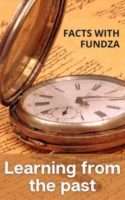In March 1960 Robert Sobukwe, leader of the PAC (Pan African Congress), was arrested and jailed. The following month, on 8 April, the ANC and the PAC were banned. By the mid-1960s Nelson Mandela and others convicted in the Rivonia Trial were in jail and many anti-apartheid leaders and activists had gone into exile. Organised resistance to apartheid within South Africa’s borders slowed down dramatically. For black people who continued to struggle against apartheid, this was a very difficult time.
In the 1970s a movement called Black Consciousness (BC), led by the charismatic Steve Biko, began a new wave of resistance. The movement started out as a student organisation, but after the formation of the Black People’s Convention (BPC) in 1971, the ideas of Black Consciousness spread into urban black communities throughout South Africa. Biko said that it was not enough to believe in and fight for freedom. Psychological transformation was necessary first. True freedom would come about only when black South Africans recognised their dignity and self-worth as human beings and took pride in their blackness. Biko argued that, after years of oppression under colonialism and apartheid, black South Africans needed to redefine themselves in their own terms, not in relation to whites and white culture. In other words, BC was a struggle to restore a fully African consciousness.
The first step … is to make the black man come to himself; to pump life back into his empty shell; to infuse him with pride and dignity … This is what we mean by an inward-looking process. This is the definition of Black Consciousness. (In Steve Biko, I Write What I Like, 31.)
Biko found inspiration in the writings of the American educator, civil rights activist and Pan-Africanist, W.E.B. du Bois, who first used the term “Black Consciousness” and in the radical ideas of Black Power and Black Theology coming out of the United States in the 1960s. He was also influenced by thinkers such as Marcus Garvey, Frantz Fanon, Leopold Senghor, Aime Cesaire, Amilcar Cabral and the American Black Panther Party.
Robert Sobukwe was another important influence. In 1959 Sobukwe and others left the ANC to form the PAC as they disagreed with the non-racialism of the Freedom Charter, believing rather that leadership of the freedom struggle should be exclusively African. Similarly, Biko stressed that black people should lead black liberation movements. White people could show solidarity and support, but they should not lead or belong to the Black Consciousness Movement. He argued that organisations could be truly non-racial and inclusive only once black people had gained psychological, physical and political power. (Importantly, for Biko black South Africans included those classified Indian and Coloured under apartheid, as they also experienced oppression. His anti-ethnic views are clear from his statement that being black was not “a matter of pigmentation”, but “a reflection of a mental attitude”.)
It would be a mistake to see BC as a form of black racism, however. Biko did not call for vengeance on white society. While the apartheid government deliberately sowed racial and ethnic mistrust, BC worked towards what Biko described as a “joint culture”: a reconciled, non-racial society. He writes:
We believe that in our country there shall be no minority, there shall be no majority, just the people. And those people will have the same status before the law. So in a sense it will be a completely non-racial society. (Steve Biko, in I Write What I Like, 170.)
A major part of the Black Consciousness Movement was its Black Community Programmes (BCP). In addition to adult literacy and “conscoiusness” classes, these included the creation of community crèches and clinics such as Zanempilo Health Clinic outside King William’s Town and the development of home industries that helped entrepeneurs.
Young people were especially receptive to the ideas of BC. Although Biko did not take part in the Soweto riots of 16 June 1976, his ideas inspired the students protesting against the government’s imposition of Afrikaans as a language of instruction at school. The state’s brutal response to the uprising sent shockwaves throughout the world and marked a turning point in South African history. Resistance to the apartheid regime intensified, both inside and outside South Africa.
In August 1976 the government detained Steve Biko without trial for a few months. In 1977 he was rearrested. Within eighteen days, he was dead. The police claimed that his death was an accident, the result of a “scuffle”, but it was later shown that he had been brutally tortured and beaten. News of his violent death caused international outrage and Biko became a powerful symbol of resistance to oppression.
Nkosinathi Biko says of his father: “In popular culture, he [remains] a very powerful symbol of hope … an icon of change. He helped to articulate our understanding, our own identity… [His ideas] continue to resonate in young South Africans to this day.

